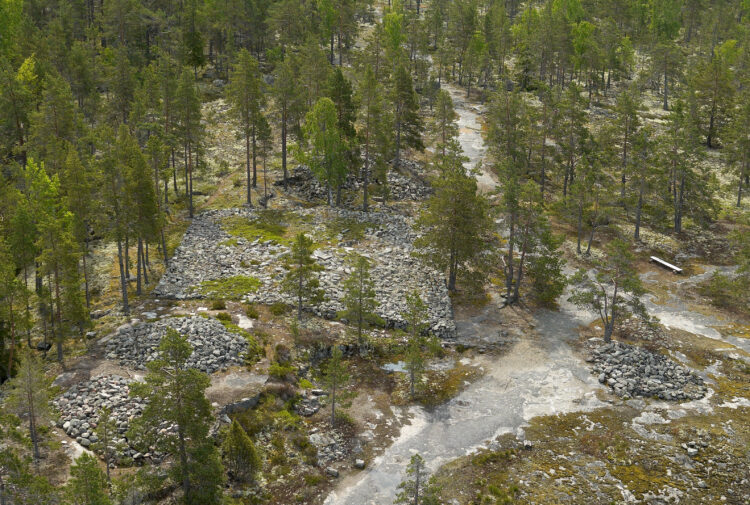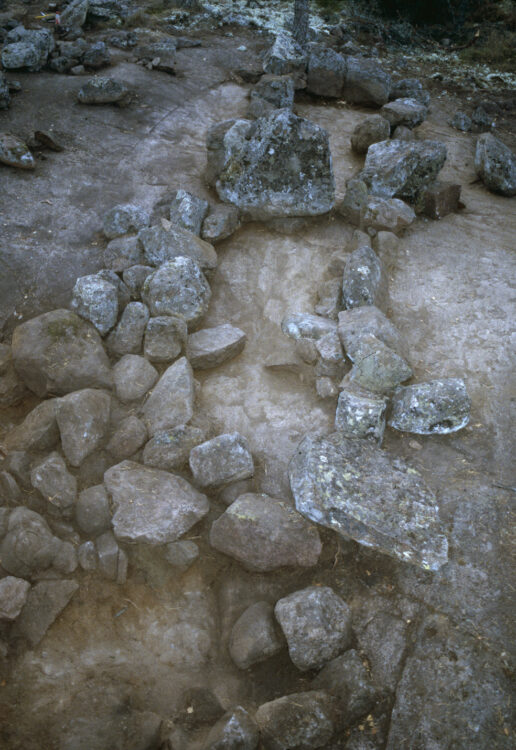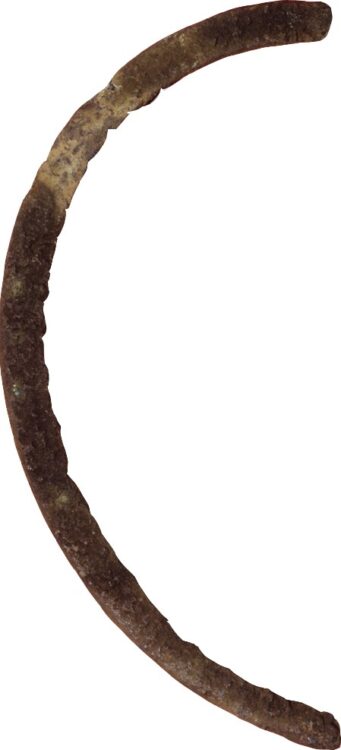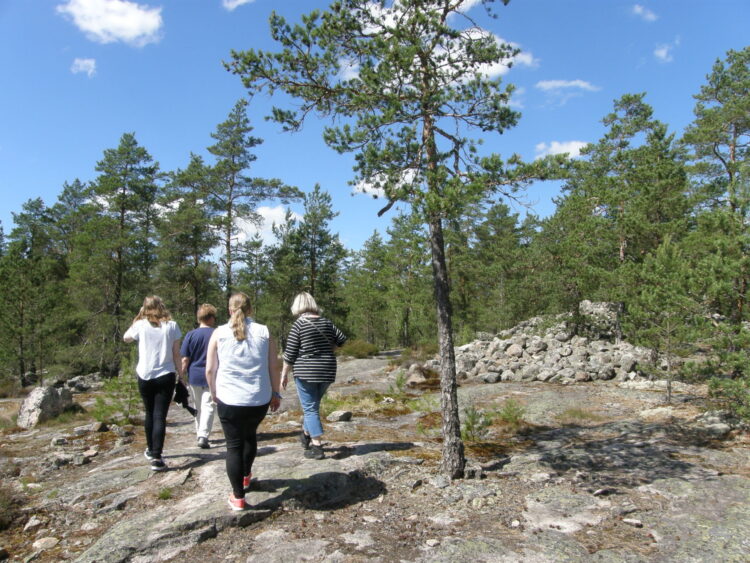Research history
Sammallahdenmäki has a history of archaeological research going back more than 100 years. In addition to the interest of researchers, the local population has also found Sammallahdenmäki fascinating, and there is local folklore inspired by the unusual structures on the hill.
The photo is from the year 1911.
Photo: The Finnish Heritage Agency.

First archaeological excavations
The Sammallahdenmäki burial cairns are mentioned in the literature as early as 1878. The first excavations on the site were carried out in 1891. Four burial cairns were excavated, including the “Church Floor” a rectangular structure, which is unusual in Scandinavia, and the ‘Long Ruin of Huilu’. Both have been interpreted as burial cairns on the basis of their construction. No finds were made during the 1891 excavations.

Excavations in 2002
The excavation of the burial cairns at Sammallahdenmäki continued in the summer of 2002, when eight structures were excavated. Burnt human bone was found in six of these, which means that the dead have been cremated. Two coffins made of large stone slabs were found at the bottom of one of the mounds, one of which, in addition to the burnt bones, contained a fragment of a bronze bracelet.

Burial from the Early Metal Age
During the archaeological investigations in 2002, a shallow structure of mixed stone and soil was investigated on the lower slope of Sammallahdenmäki, near Lake Saarni. The excavations revealed two separate burial structures, connected by a headstone. This grave dates back to the Early Iron Age, around the year 0. The only artefact found in all of the excavations was found from this grave. It was a fragment of a bronze bracelet.
Photo: The Finnish Heritage Agency

A fragment of a bracelet from the early Iron Age, around the year 0
This object was discovered during archaeological excavations in 2002 on the Sammallahdenmäki and is the only artefact find from the whole area.
Photo: The Finnish Heritage Agency

Bronze Age climate
During the Bronze Age, Finland had a warmer climate than today. Oak, elm and lime grew in Satakunta. Land uplift was faster and the landscape changed rapidly. The sea level in the Rauma area was almost 30 m higher than today at the beginning of the Bronze Age, but only less than 20 m higher at the end of the period. In addition to livestock farming, fishing, bird-watching and hunting provided a livelihood. There was already a small amount of land cultivation, mainly by ploughing.